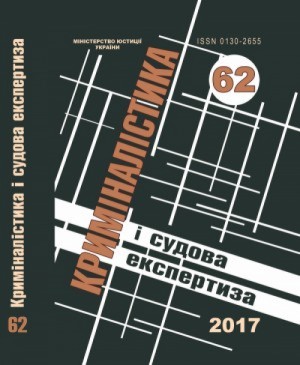A. Zherebko
Summary
The article deals with the criminal-legal and criminalistics characteristics of thefts of someone elseʼs property. The main directions and content of the investigatorʼs (investigatoryoperational) group activity are revealed in the initial and subsequent stages of the investigation of the secret abduction of anotherʼs property, the interaction in the disclosure of crimes, and others.
According to the results of the study, it was concluded that the attention paid to the development of forensic characteristics was due to the need to improve the methodology for investigating a certain type of crime on the basis of knowledge of the mechanism of its accomplishment, methods of tracing, etc. The disposition of the relevant criminal law is the legal basis for criminalistics characteristics crimes. Criminalistics characteristics of crimes specify the constitutions of certain crimes described in norms of criminal law, its elements. Criminalistics characteristics of crimes, including thefts, are one of the most important elements of the forensic methodology. It is an interconnected set of individual characteristics of a certain category of crimes, characterizing the situation, the method and mechanism of committing and concealing a crime, the identity of the perpetrator and the victim, relevant for the detection, disclosure and investigation of the crime. Elements of criminalistics characteristics of thefts are: the methods of committing thefts; the subject of a criminal offense; a typical “follow-up picture”; identity of an offender; identity of a victim; information about the typical time of theft.
At the present stage of our countryʼs development, criminalistics, the improvement of techniques, tactics, techniques and devicesʼ modernization is important for the investigation of crimes against property; the experience and professionalism of law enforcement agencies promotes the prompt and effective disclosure of criminal misconduct on property.


